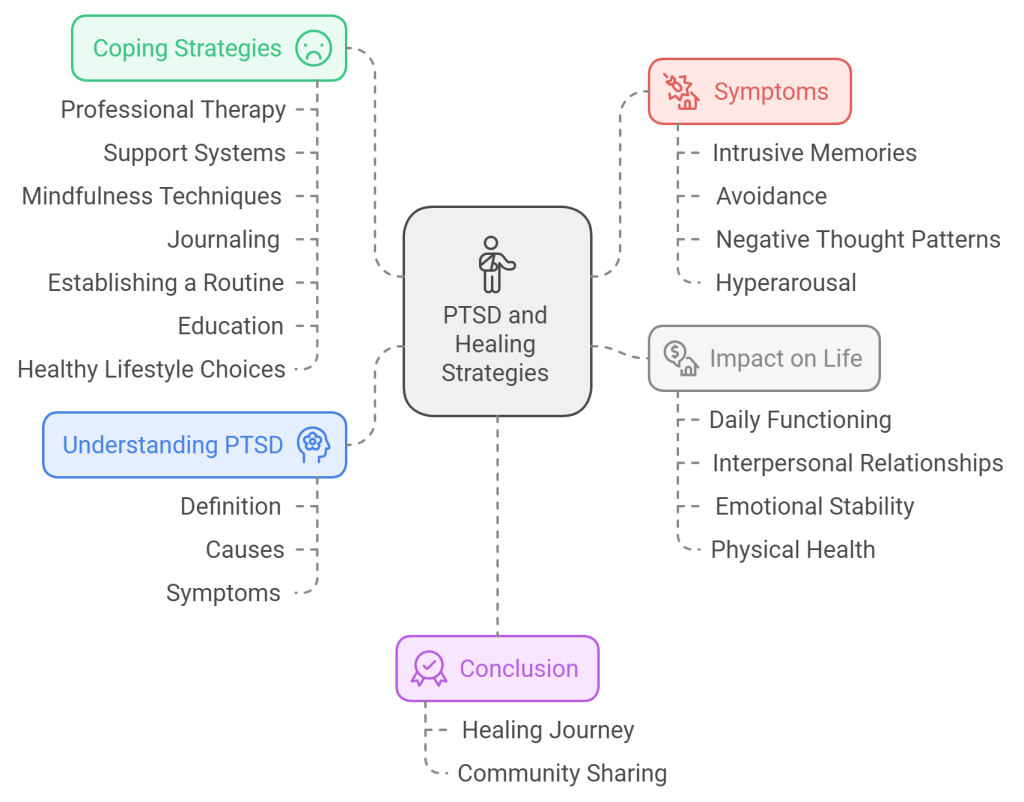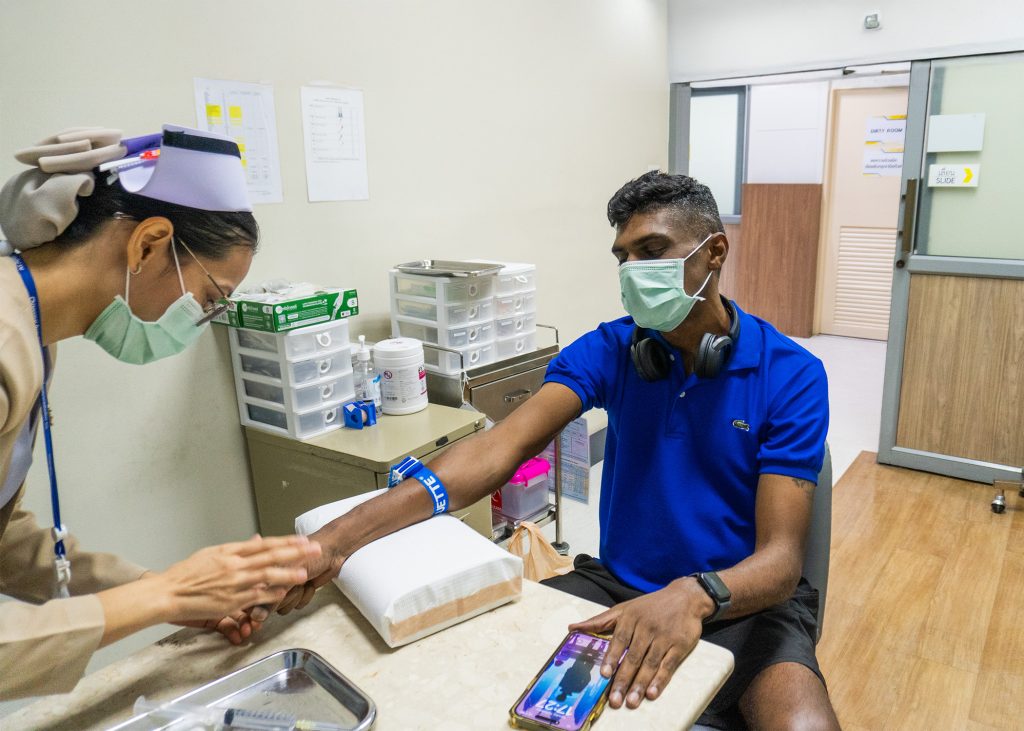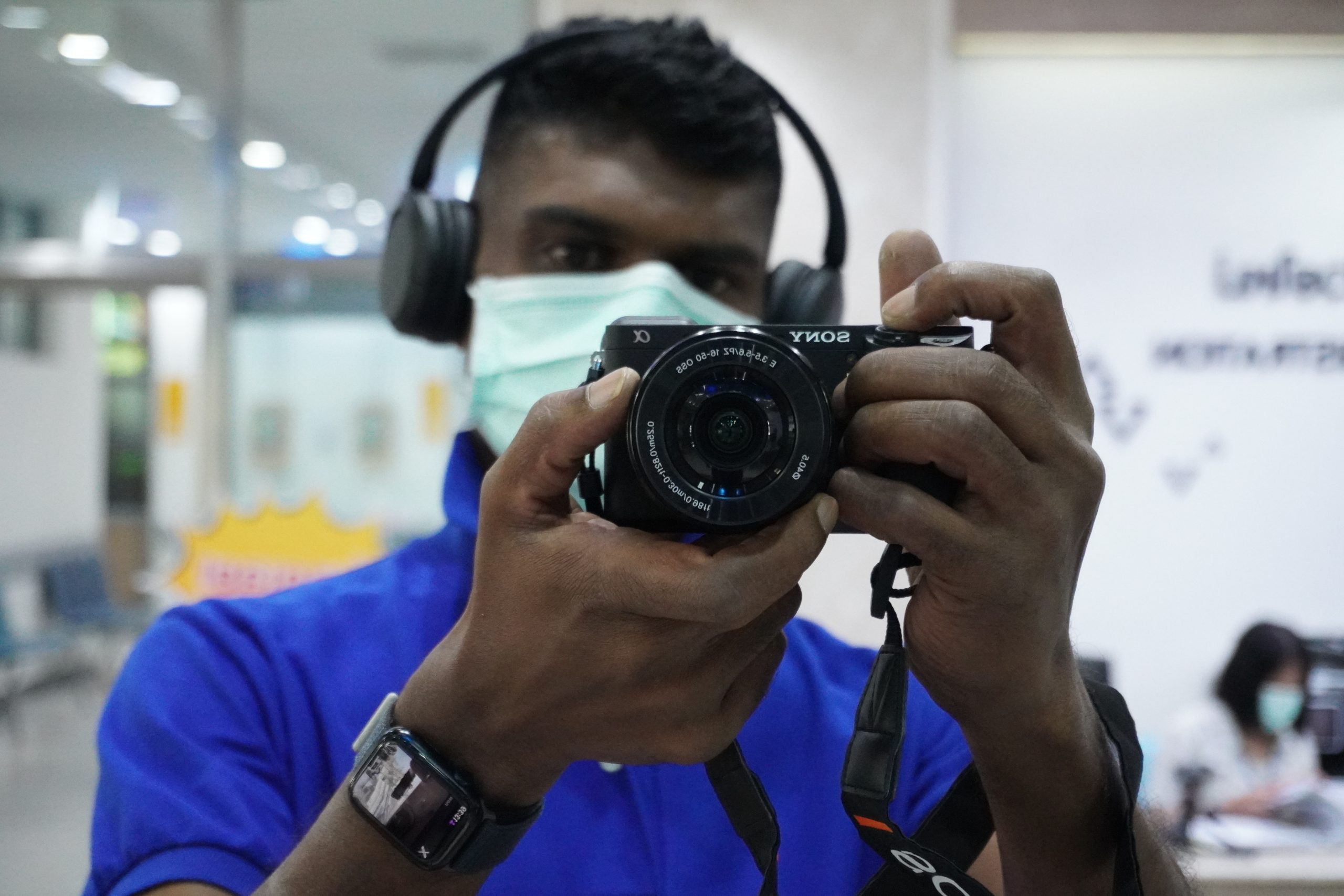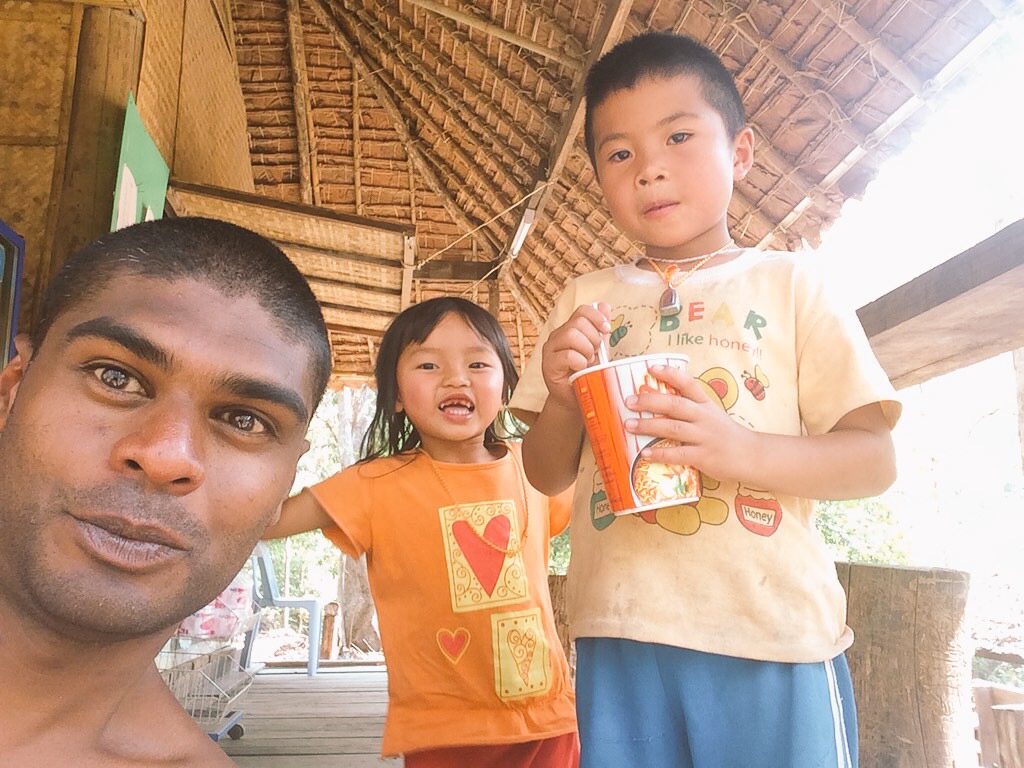Introduction
Living with Post-Traumatic Stress Disorder (PTSD) can be deeply isolating and overwhelming, affecting not only those who experience it firsthand but also their families and loved ones. I believe in the importance of knowledge, community support, and proactive strategies for recovery. It is crucial to understand that each individual’s journey is unique, and not all coping strategies work for everyone. This guide takes an in-depth look into PTSD, its symptoms, and effective coping mechanisms grounded in research to support those navigating their recovery journey. The fight to “Overpower Trauma” is a constant battle, that should never be minimized, this guide is an attempt to strengthen the armory of those in the fight.
PTSD affects all aspects of a person’s life—from daily functioning to interpersonal relationships, emotional stability, and even physical health. Understanding PTSD’s complex nature is crucial for developing effective coping skills and reclaiming control over one’s life. This guide aims to provide a comprehensive roadmap for those seeking a deeper understanding of PTSD and methods for managing it effectively.
What is PTSD?
Post-Traumatic Stress Disorder (PTSD) is a mental health condition triggered by experiencing or witnessing a traumatic event. Unlike temporary stress reactions, PTSD symptoms can persist for months or even years, significantly disrupting everyday life and relationships. Around 6-10% of people experience PTSD during their lifetime, with notably higher rates among veterans, first responders, and survivors of violence. PTSD is characterized by a prolonged stress response where the brain struggles to process and store traumatic memories effectively. Understanding the causes of PTSD is an important step toward regaining control and progressing toward healing.
Trauma profoundly affects the nervous system, often altering the body’s natural response to stress. The amygdala, hippocampus, and prefrontal cortex—key components of the brain—are impacted in individuals with PTSD, but it is important to recognize that PTSD symptoms arise from a complex interplay of various brain regions, hormonal changes, and environmental influences. Understanding these physiological effects can be empowering, helping individuals understand that their experiences are rooted in biological changes and that recovery is attainable.
Common PTSD Symptoms
PTSD manifests through four primary categories of symptoms:
- Intrusive Memories: Recurrent flashbacks, nightmares, or involuntary memories of the traumatic event. These experiences often feel as vivid as the original trauma, leading to considerable emotional distress. Intrusive thoughts can be triggered by seemingly minor stimuli, such as specific sounds, smells, or environments.
- Avoidance: Steering clear of people, places, or activities that serve as reminders of the trauma. This avoidance can extend to thoughts, feelings, or conversations related to the trauma, often hindering individuals from processing their experiences healthily.
- Negative Thought Patterns: Persistent negative beliefs about oneself or others, feelings of hopelessness, guilt, detachment, or difficulty experiencing positive emotions. Individuals may also struggle with pervasive shame or self-blame, believing they could have prevented the trauma or acted differently.
- Hyperarousal: Heightened states of alertness, including irritability, difficulties with sleep, or exaggerated startle responses. Hypervigilance can leave individuals feeling constantly on edge, as if danger is always imminent, further exhausting their emotional and physical energy.
These symptoms can vary widely in intensity and may be exacerbated by additional stressors or traumatic triggers. By understanding these categories, individuals anReader Safety and Trigger Warning: The following section discusses PTSD symptoms, which may be distressing for some readers. Please proceed with caution and seek support if needed.

Effective Coping Strategies for PTSD
Managing PTSD can be challenging, but several evidence-based coping strategies have been shown to help reduce symptoms and improve quality of life. It is crucial to recognize that these approaches may not work the same way for everyone. Below are some key methods to foster resilience and promote healing:
- Seek Professional Therapy
Engaging in therapy, ideally under the guidance of a qualified mental health professional, is one of the most effective approaches for managing PTSD. Cognitive Behavioral Therapy (CBT) helps individuals restructure negative thought patterns and develop healthier coping mechanisms. Research suggests that CBT can reduce PTSD symptoms by up to 50%. Trauma-Focused CBT (TF-CBT) is particularly effective, emphasizing gradual exposure and cognitive restructuring to reduce the impact of traumatic memories. It is essential to conduct TF-CBT with a qualified therapist, as addressing potentially distressing memories requires professional support. Group therapy can also be highly beneficial, offering peer support and fostering a sense of community through shared experiences. Additionally, Acceptance and Commitment Therapy (ACT) has been helpful for some individuals, encouraging them to accept negative thoughts instead of fighting them, thereby minimizing their impact. - Build a Support System
Developing a strong support network is crucial for emotional recovery. Connecting with compassionate friends and family can alleviate feelings of isolation and create a safe space for expressing emotions. Participating in support groups—whether in person or online—can also foster a sense of community and shared experience, which are key components of recovery. Research shows that those engaged in support groups tend to see faster improvement in PTSD symptoms. Connecting with others who understand the challenges of PTSD can provide invaluable comfort and hope.Peer-to-peer programs like those offered by NAMI can also be invaluable, offering educational resources and opportunities for individuals and their loved ones to connect with others in similar situations. - Mindfulness and Relaxation Techniques
Practices such as mindfulness meditation, yoga, and relaxation exercises are powerful tools for managing stress and reducing anxiety. Techniques like deep breathing, progressive muscle relaxation, and mindfulness meditation help individuals stay grounded in the present, countering intrusive thoughts and hyperarousal. Evidence suggests that regular mindfulness practice improves emotional regulation and overall well-being. Structured programs like Mindfulness-Based Stress Reduction (MBSR) have shown significant benefits in enhancing awareness and decreasing PTSD symptoms. - Journaling for Healing
Writing about thoughts and emotions is a therapeutic method for processing trauma and recognizing triggers. Journaling offers a structured way to reflect on experiences and gain insights into emotional responses. Trauma-focused journaling allows individuals to revisit and reframe difficult memories, which can be a pivotal aspect of healing. Consider using prompts such as, “What challenges am I currently facing, and how can I approach them more effectively?” or “What emotions did I experience today, and what may have triggered them?” Journaling helps externalize thoughts, making them more manageable and less overwhelming. - Establishing a Routine
Establishing a daily routine can foster stability and predictability, which is especially beneficial for individuals struggling with PTSD. Including activities that bring joy—such as hobbies, spending time in nature, or engaging in creative projects—can create a more balanced and fulfilling lifestyle. Routine activities also reinforce healthy habits and provide a sense of accomplishment, boosting self-efficacy. Even small daily rituals, like morning stretches or a cup of herbal tea in the evening, can bring comfort and predictability. - Educate Yourself About PTSD
Empowering yourself with knowledge about PTSD can be a crucial aspect of the healing journey. Understanding symptoms, triggers, and effective coping mechanisms facilitates better communication with therapists and loved ones. Attending trauma recovery workshops, enrolling in online courses, or reading books about PTSD can enhance coping skills and resilience. It is important to acknowledge that PTSD can manifest differently across cultures and individuals. Coping mechanisms that work in one context may not be effective in another, so cultural sensitivity and an individualized approach are essential. Learning about the biological mechanisms of PTSD also helps destigmatize the experience, as individuals understand that their responses are normal reactions to abnormal events. - Healthy Lifestyle Choices
Adopting healthy lifestyle habits is essential for managing PTSD. Regular physical activity, balanced nutrition, and avoiding harmful substances all contribute to improved mental health. Exercise, in particular, releases endorphins that elevate mood, while avoiding alcohol and drugs prevents the exacerbation of PTSD symptoms. It is also important to recognize that PTSD often coexists with other conditions like depression, anxiety, or substance use disorders. Integrated treatment approaches are crucial for addressing these interconnected challenges effectively. Studies show that regular exercise can reduce anxiety, improve mood, and enhance sleep quality—all of which are critical for PTSD recovery. Cardiovascular activities like jogging, cycling, or swimming can be especially effective. Additionally, maintaining a balanced diet rich in omega-3 fatty acids, antioxidants, and vitamins supports overall mental health and resilience. Practicing good sleep hygiene—such as maintaining a consistent sleep schedule, creating a relaxing bedtime routine, and reducing screen time—can also significantly improve PTSD symptoms.
Conclusion
Healing from PTSD takes time, patience, and self-compassion. It is a journey that involves building supportive relationships, accessing community resources, and adopting proactive coping strategies. My goal is to provide valuable resources and foster a supportive community that helps those affected by trauma build resilience and find strength. It’s important to recognize that healing is not linear—there will be setbacks—but with persistence, hope, and the right tools, recovery is possible.
For those navigating PTSD, embracing vulnerability and seeking help are acts of courage. By taking small but consistent steps toward recovery, individuals can reclaim a sense of safety and empowerment. Healing is deeply personal, and while the journey can be daunting, there is also incredible potential for growth and transformation. As individuals progress, they may discover newfound strengths and a deeper capacity for empathy and connection.
Call to Action: “Share Your Journey to Inspire Others”
Healing begins with sharing. What strategies have helped you or your loved ones manage PTSD? Leave a comment below or share your insights with our community using #PTSDJedi. Together, we can navigate the path to healing.
Your voice matters, and your story could be the encouragement someone else needs to begin their healing journey. Together, we can break the silence, build resilience, and inspire each other to move forward, one step at a time.



Further Reading
- National Institute of Mental Health (NIMH) – Post-Traumatic Stress Disorder
- American Psychological Association – PTSD
- Veterans Affairs – Understanding PTSD
- Mayo Clinic – PTSD Overview
- World Health Organization (WHO) – Mental Health and Trauma
- National Center for PTSD – Coping with PTSD
- Harvard Health – Exercise and Mental Health
- Mindful – Getting Started with Mindfulness





0 Comments